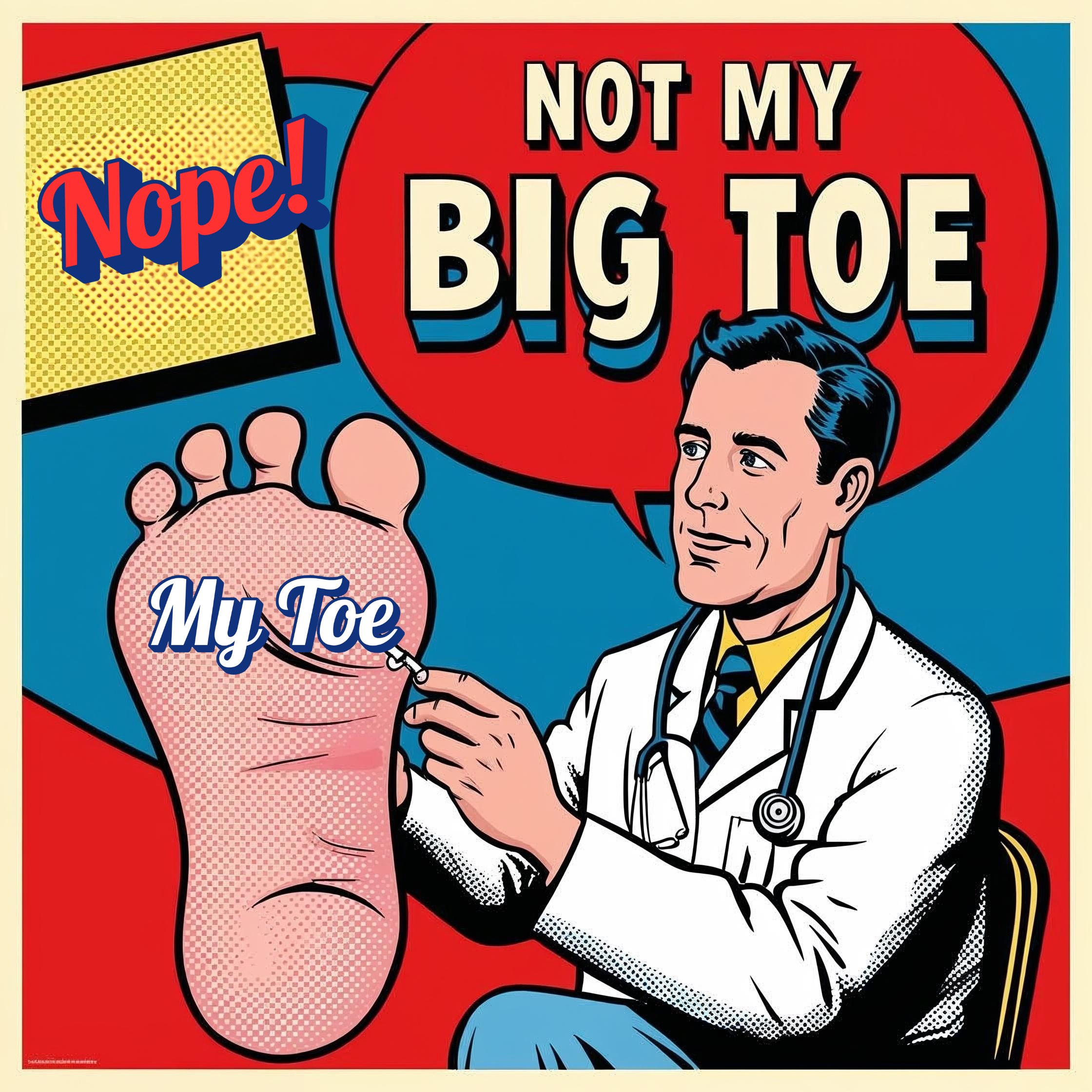Physical Address
304 North Cardinal St.
Dorchester Center, MA 02124
Physical Address
304 North Cardinal St.
Dorchester Center, MA 02124

For over a decade, I have seen my fair share of doctors. But today was different. I visited a podiatrist for the first time since my college football days. Back then, I iced my shins, the hard bone above the ankle, religiously due to my flat feet. Fast forward to now, and I have been walking like Fred Sanford from Sanford and Son for the past two weeks. The pain in my right foot felt intense, almost unbearable.
Walking into the podiatry office, I noticed I was the youngest person there by at least 15 years. After a quick check-in, my wife and I were called back within minutes. The exam room had a sleek, high-tech medical table, shiny black and fully adjustable, more comfortable than my own bed. I was so distracted by it that I almost forgot to take off my shoes and socks.
After a few tests, the diagnosis was clear: gout. The doctor asked me to rate my pain from 1 to 10. I told him it was a 7 or 8. He suggested a steroid shot with numbing medicine to relieve the pain, estimating it would drop to a 1 or 2. Despite his reassurance, fear gripped me. The idea of a needle near my toe sent my mind into overdrive.
The doctor gave me a three-minute pep talk, explaining how gentle the procedure would be and how much relief I would feel afterward. With my wife cheering me on, I agreed. They numbed the area with a cold spray and used an X-ray machine to guide the needle. The doctor advised me not to look, so I pulled out my phone to distract myself with a casino game.
But within seconds, I clenched my eyes shut, slowed my breathing, and visualized a calmer scene, somewhere peaceful, far from needles. Of course, my “casino day” ended abruptly when I felt the fluid entering my toe. Just as I was trying to reach my happy place, the doctor and my wife kept checking in:
Finally, it was over. “It’s starting to numb up,” I said. We scheduled a follow-up and left with a treatment plan in place.
Later, at home, I processed the experience with my wife. The pain itself was manageable, but the anticipation was worse. My fear stemmed from the unknown, my brain’s instinct to protect me by screaming “DANGER!” even when the threat was not life-threatening.
I have had plenty of needles before, some painful, some not. But my mind had conditioned itself: needle + skin = pain. This time, I had to consciously trust the doctor, my wife, and the process.
There was another layer, too. As a Black man, I could not shake the historical, and sometimes present, notion that medical professionals might assume Black people have a higher pain tolerance. That racial trauma lingers, making trust even harder.
Here is what got me through the procedure, and what can help you in stressful situations (just not while driving or operating heavy machinery):
This brings you back to the present, reducing panic.
Picture a safe, peaceful place, like a beach, a forest, or a childhood memory. Immerse yourself in the details.
Fear thrives in the unknown. But with mindfulness, trust, and preparation, we can face it, one deep breath at a time.
Have you been in a similar situation? What helps you cope? Share in the comments!
Disclaimer: This blog is for informational purposes only and not medical advice. Always consult a healthcare professional for personal concerns.